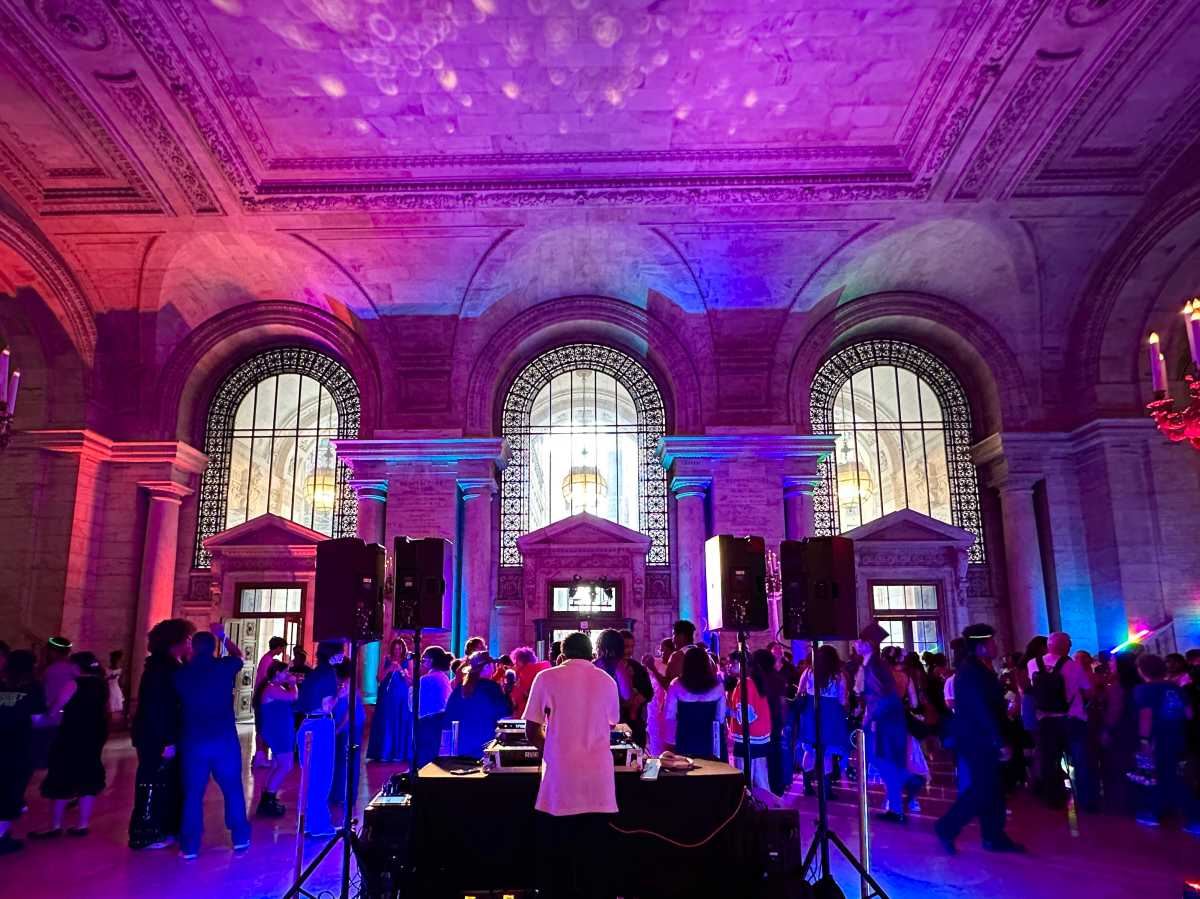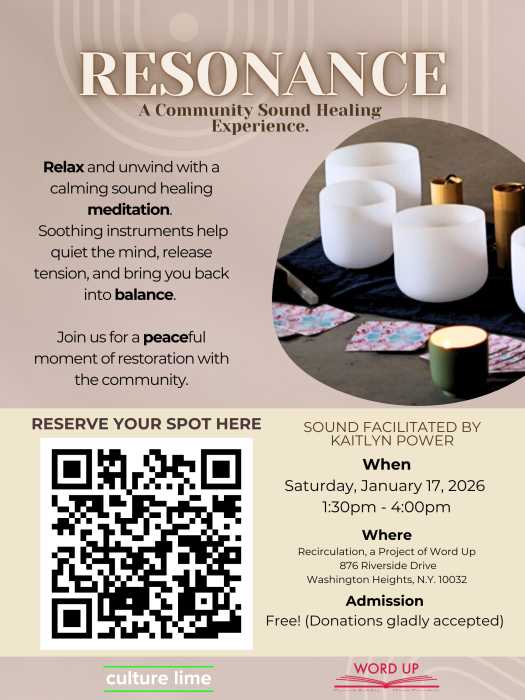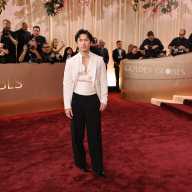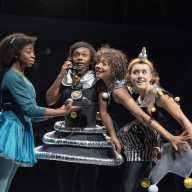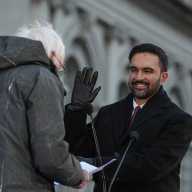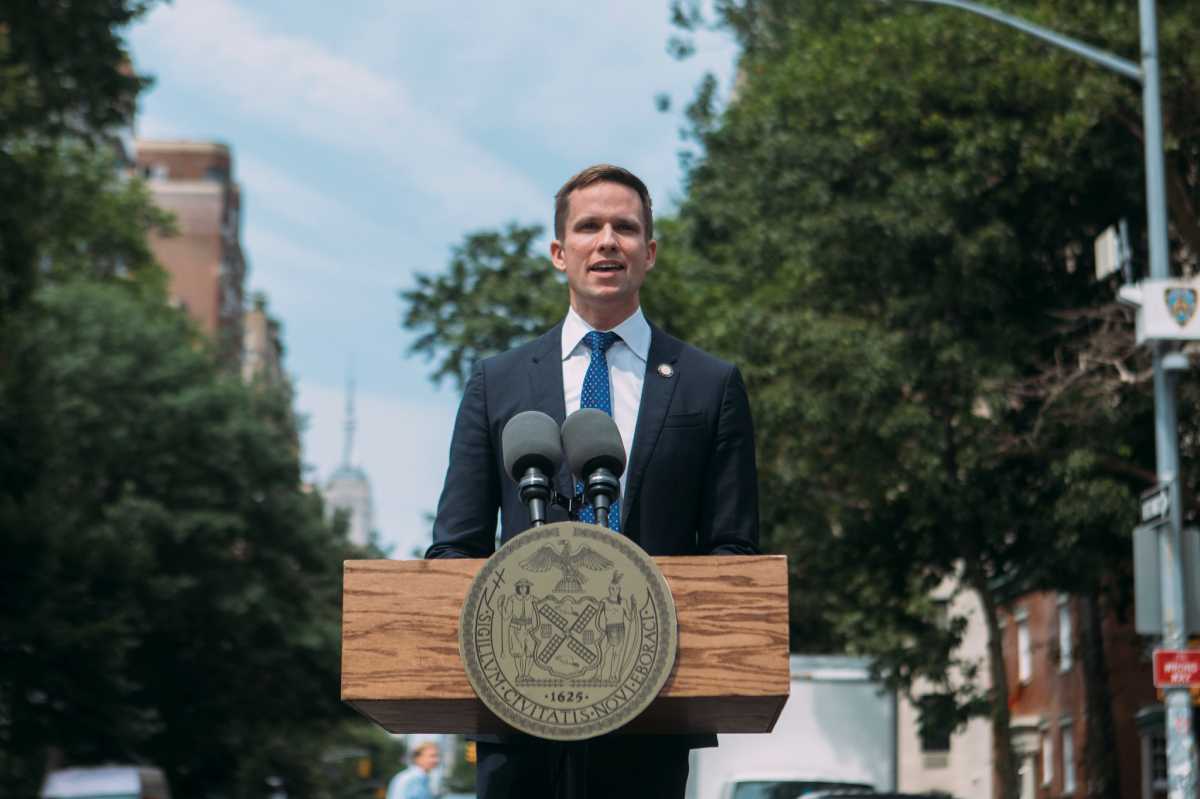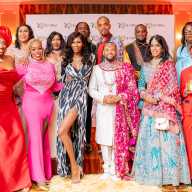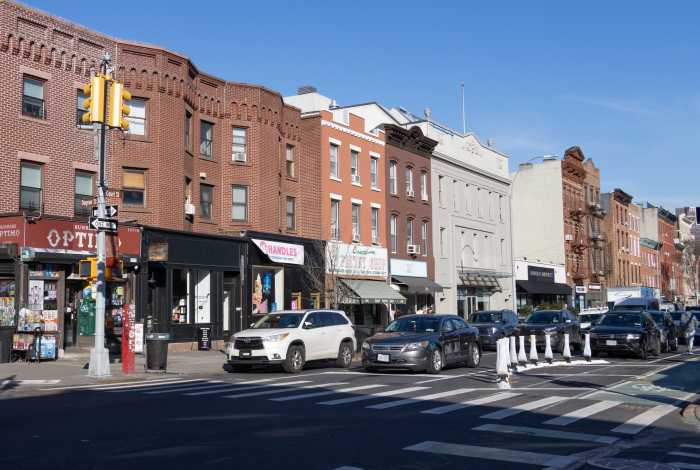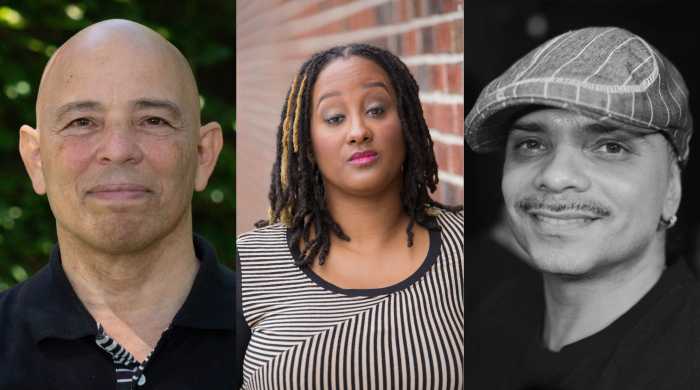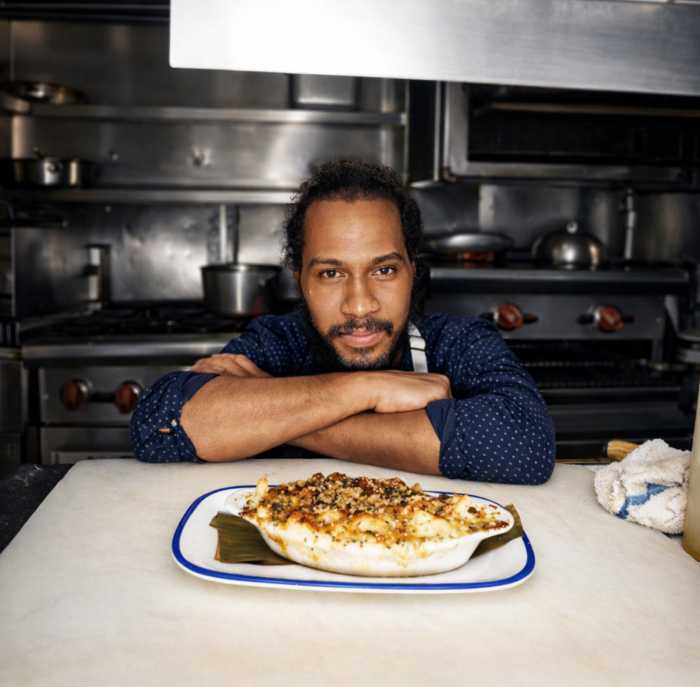On a hot Friday night in late June, Erika Rivera, 36, a mom from the Bronx, stood on the Fifth Avenue sidewalk in front of the New York Public Library’s Stephen A. Schwarzman Building in midtown Manhattan. She waved to her “kiddo” as they walked up the marble steps and into the building for the Anti-Prom taking place inside. The annual end-of-the-year dance party welcomes and celebrates young people of all sexualities and gender identities and expressions.
The proud and nervous mom looked on protectively as she stood between the pair of library lions Patience and Fortitude. Speaking to Gay City News, Rivera said her child’s middle school didn’t have prom, so she brought them here so that they could have a good time.
“Our family is extremely accepting,” Rivera said. “We have LGBTQ family members on both sides of the family — on my mom’s and dad’s side — and love is love.”
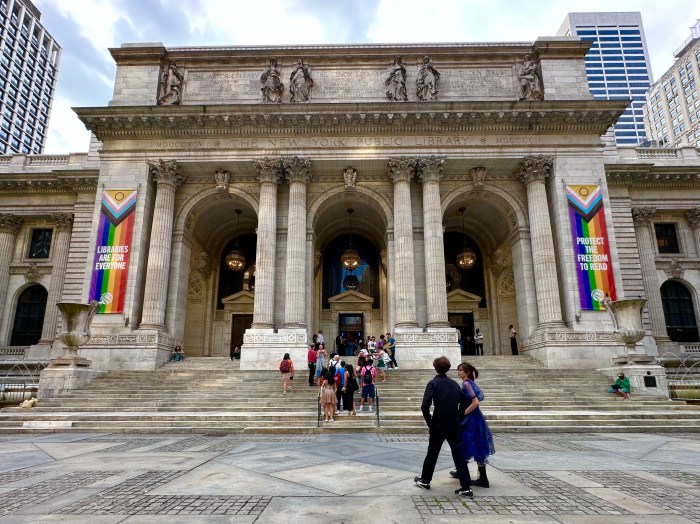
Begun in 2004, the Anti-Prom is a free event for city youth ages 12-18, with the library providing a DJ, snacks, soft drinks, and activities, like this year’s student-produced fashion show that had a fantasy theme.
The first Anti-Prom saw 100 people in attendance. On this most recent night in June, the event’s 20th anniversary, 500 people had RSVP’d, according to Caitlyn Colman-McGaw, associate director of young adult programs and services.
Colman-McGaw has been organizing the event since joining the New York Public Library in 2015. And while she wasn’t sure how many young revelers would ultimately show up that night, she said, “I want them to know they can be themselves. They can be loud. They can be quiet. I just want them to feel welcomed.”
Inside the dazzling Beaux-Arts splendor of Astor Hall, the DJ spun “You Belong With Me,” the Taylor Swift anthem to unrequited love and yearning from the sidelines. Other popular tracks of the night included Katy Perry as well as merengue and West Indian tunes. A conga line snaked under the grand arches and a breakdancer did the helicopter on the marble floors.
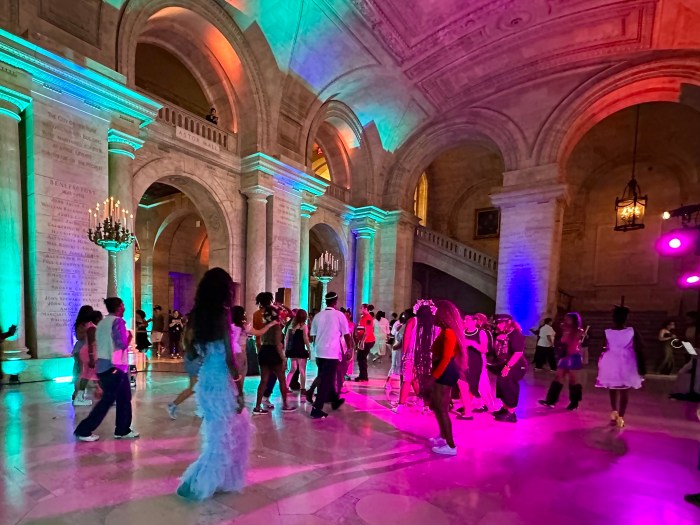
While there wasn’t a single traditional tux or corsage in sight, there were teens who still looked regal in DIY tiara-and-flower-crown combos and jewel-toned ball gowns, as well as some who arrived in worn out jeans and jean shorts. Many attendees spent the night dancing and cheesing for their cellphone cameras. But, most important of all, there was no judgment.
One teen, who attends the High School for Fashion Industries in Manhattan, looked statuesque in a lilac confection that he said he’d made himself. He was turning 18 the following week and admitted that things had been tough for him recently and he’d come to the prom with friends “as a way to blow off steam.” After dancing all night, he carried his blinged, rhinestone heels in his arms. A bi teen from Queens who punctuated every sentence with a tongue pop, he said he liked to do drag and counted Ru Paul, Beyoncé, and Honey Balenciaga as role models.
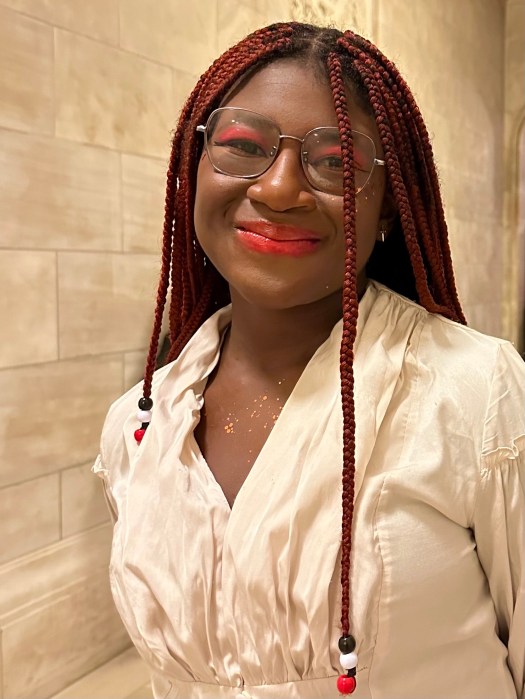
Cici, a 17-year-old trans youth from Brooklyn, who identifies as aroace (aromantic and asexual), and who was the first person to come down the marble staircase in that night’s fashion show, said, “No one should tell you how to express yourself, how you should look, how you should feel, who you’re supposed to be. Just be you. And if they don’t accept you, that’s okay. You have other people to accept you.”
When asked about the increasing backlash against LGBTQ visibility, Cici said they took courage in even the small ways they have been able to assert identity and visibility.
“I have something small in my room for my mom to see,” they said. “Well, actually, they’re not small. I have big flags posted on my walls and on my closet door so that my mom can know that this is me. If you like it, you can like it. If you don’t, that’s not my problem. I’m expressing who I am.”
Cici also took courage and inspiration from the annual Pride Parade. “I try to go every year. I think this will be like my third time going. The parade helps me express myself even more, and just be me.”
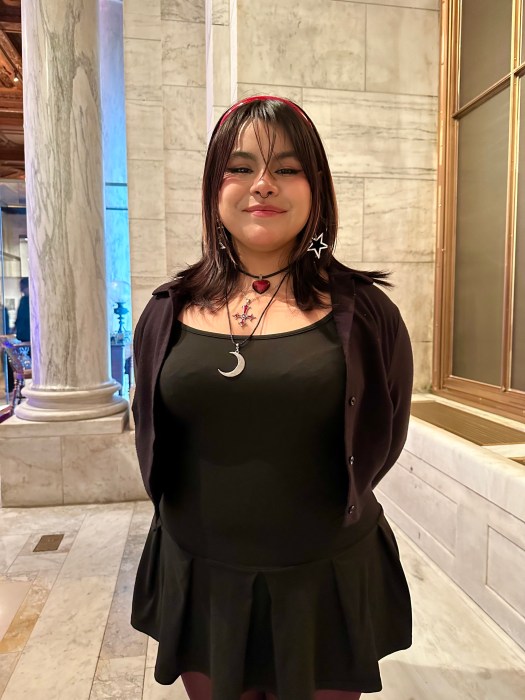
Britny, a 17-year-old from Ecuador who identifies as non-binary, has been a volunteer at the library for the past three years. “I started volunteering when I was a sophomore,” Britny said, “and I give that youth perspective for events like this.”
Britny, who attends the Beacon School, a project- and performance-based high school in Manhattan, will graduate at the end of June and they encouraged all young people to visit the Stavros Niarchos Foundation Library’s Teen Center.
“They’re amazing and they will help you do anything, whether it concerns the LGBTQ community or you just want to try something out,” they said. “They have so many fun things to do: events, crafts, games, study rooms if you need to study. And overall, I think personally, the environment where you know that you can fully express yourself is amazing.”
But it’s not just the Stavros Niarchos Foundation Library in midtown Manhattan that boasts a teen center. In total, the New York Public Library staffs 20 teen centers at branches across the Bronx, Manhattan, and Staten Island, providing activities for city youth throughout the year.
As the party went on and the stubborn summer twilight hung on outside, three friends were calling it a night. They stood on the steps in front of the library as the music floated out to Fifth Avenue, where pedicabs wheeled past, thumping “Empire State of Mind” by Alicia Keys and Jay-Z.
Empi, 16, a Ghanaian from Brooklyn who identifies as bi, had come to the Anti-Prom with two friends, a straight couple who count themselves as LGBTQ allies. That night, Empi had worn a blue sheath dress she already owned that only cost her the time it took to find it in her room.
Looking back toward the open doors where the colored lights and the music were still pulsing, Empi said, “I mean they said it was inclusive,” but she admitted she hadn’t realized just how diverse the Anti-Prom was going to be.
“It was freedom—,” she said, as she grasped for other words. “Also, not gonna lie, it was free.”

